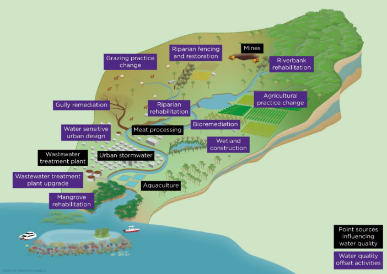ECONOMY
The Offsets Debate Integrity frameworks and when offsets hurt returns

Carbon offsets have emerged as one of the most widely used mechanisms for companies and investors to demonstrate progress toward net-zero and other climate commitments. By purchasing carbon credits tied to projects such as reforestation, forest conservation, renewable energy, or methane capture, organizations can compensate for emissions that are difficult or costly to eliminate internally. For many businesses, this approach provides a seemingly cost-effective and immediate solution to reduce their carbon footprint without massive operational overhauls.
However, the increasing reliance on carbon offsets has sparked a global debate over their credibility, effectiveness, and financial implications. At the heart of the controversy is the question of integrity—do offsets actually deliver the promised climate benefits, or are they just a convenient accounting trick that enables greenwashing?
Not all carbon offsets are created equal. High-quality offsets require rigorous standards that ensure additionality (emission reductions would not have occurred without the project), permanence (carbon stays sequestered long-term), and verification by independent third parties. Unfortunately, many offset programs fall short. Investigations have revealed instances where projects credited for reducing emissions either never delivered the reductions or reversed within a few years, such as forest fires wiping out reforestation efforts.
To address these issues, integrity frameworks like the Integrity Council for the Voluntary Carbon Market (IC-VCM) and initiatives aligned with the Paris Agreement have introduced stricter rules for transparency, verification, and quality assurance. These frameworks aim to separate legitimate offsets from those that are low-quality or even fraudulent.
From an investment standpoint, offsets can enhance ESG credentials and attract sustainability-focused capital. However, an overreliance on offsets—particularly cheap ones—can undermine long-term returns. This is especially true as regulators, rating agencies, and voluntary standards bodies push for “real emissions reductions” over offsets. Portfolios that fail to adapt risk devaluation when carbon-intensive assets are repriced under more stringent climate policies.
The solution is not to abandon offsets entirely but to integrate them into a broader decarbonization strategy that prioritizes actual emissions reductions first. Companies should adopt offsets as a complementary tool, ensuring that they meet the highest integrity standards. Investors, meanwhile, must apply due diligence to assess the credibility of offset programs within portfolio companies and weigh potential risks against ESG performance benefits.
Ultimately, the offset market is evolving from an unregulated, voluntary system into a highly scrutinized and regulated component of the global climate finance architecture. The winners will be those who embrace transparency, adopt robust integrity frameworks, and treat offsets as part of a long-term, science-based climate strategy rather than a quick fix.

At least 20 people killed in Russian glide bomb attack on village in eastern Ukraine

Transition vs. Physical Risk A decision tree for which risk dominates by industry.

Getting Assurance-Ready — Controls and evidence trails for sustainability data.
Stay Connected
trending posts

TOP Categories
Google Web Reporters













3 comments
David Bowie
3 hours agoEmily Johnson Cee
2 dayes agoLuis Diaz
September 25, 2025